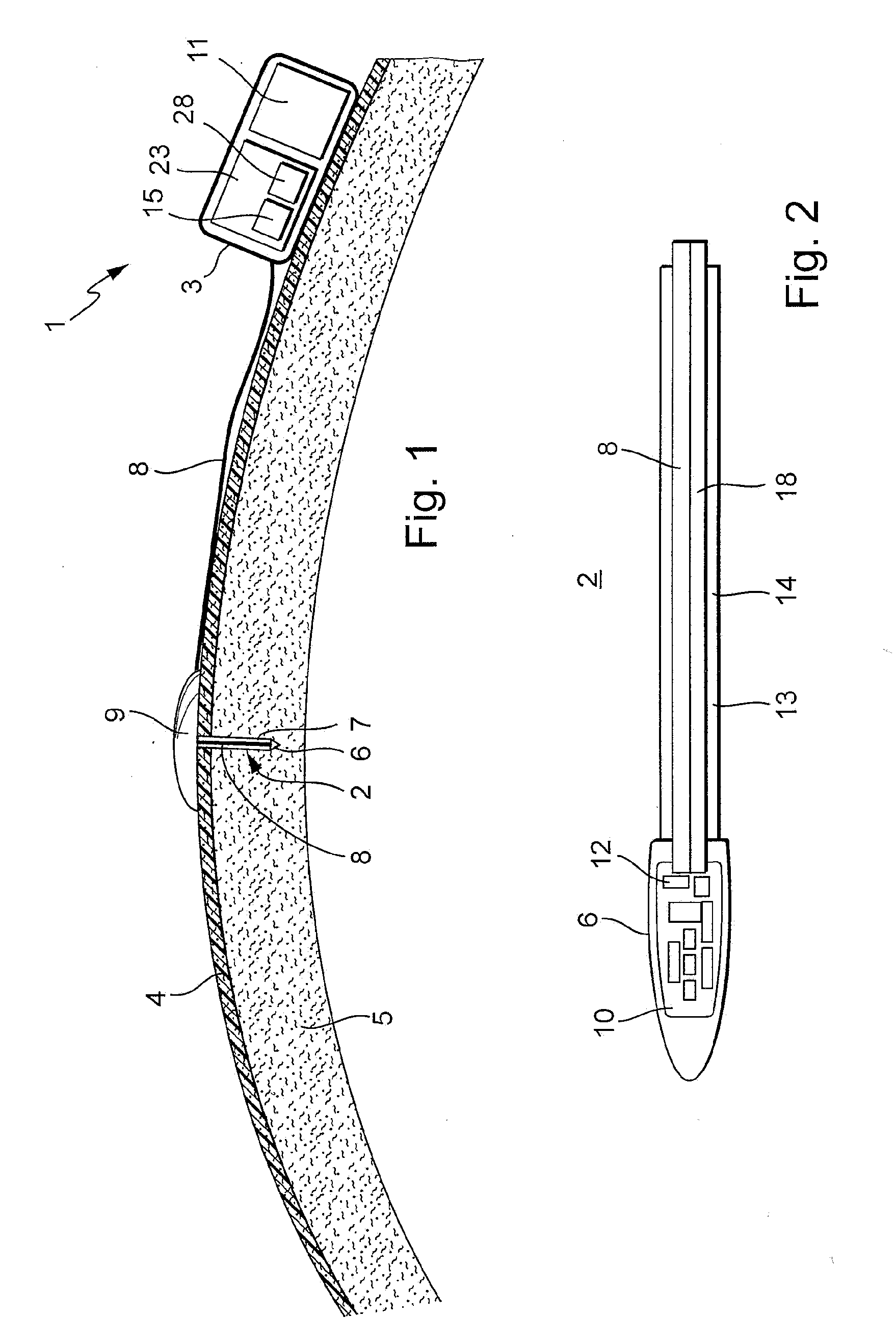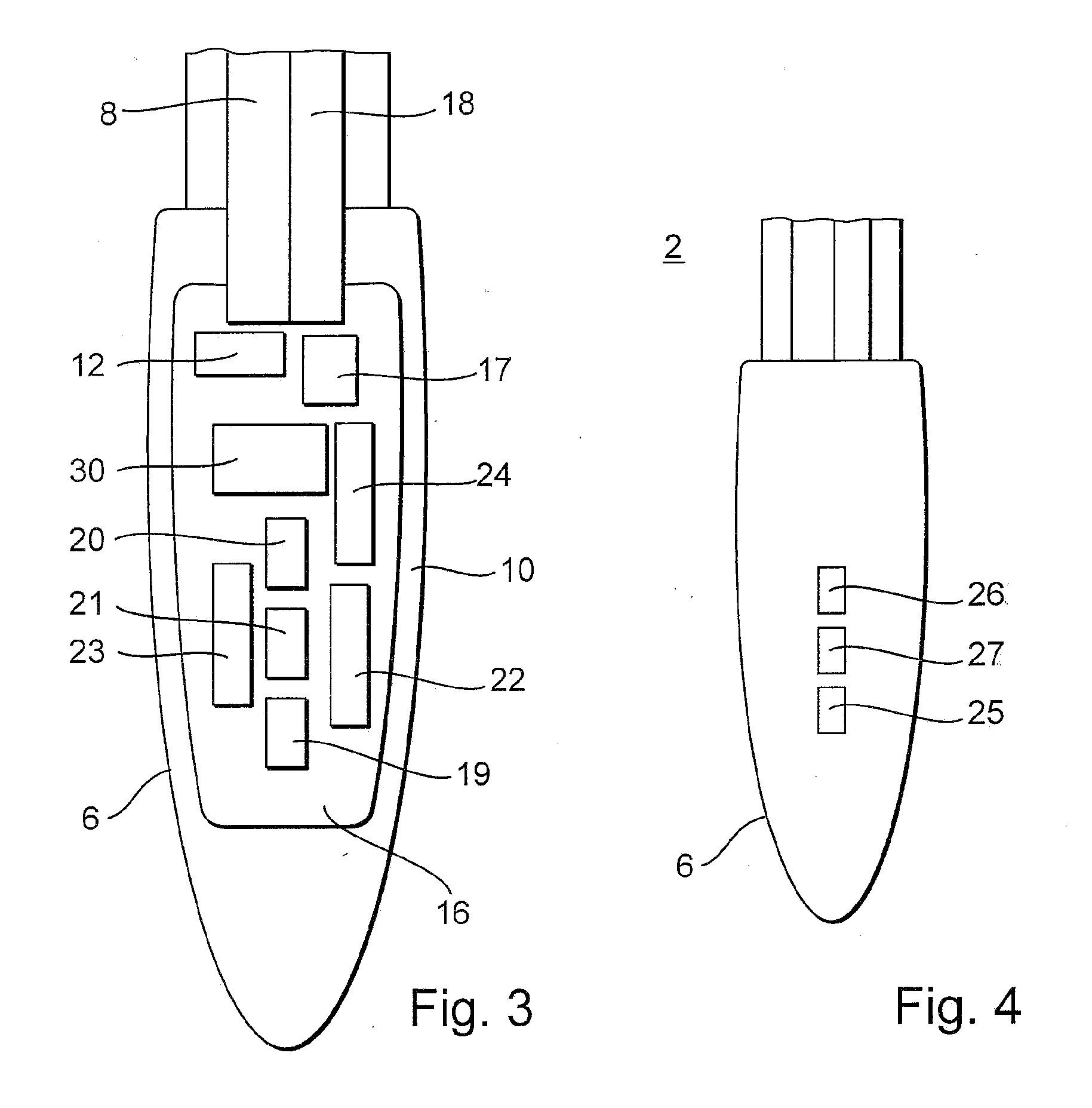Analysis device for in vivo determination of an analyte in a patient's body
an analysis device and in vivo technology, applied in the field of in vivo determination of analyte in patients' bodies, can solve the problems of high demands regarding the isolation of signal wires, inability to exclude the occurrence of leakage current, and troublesome operation
- Summary
- Abstract
- Description
- Claims
- Application Information
AI Technical Summary
Benefits of technology
Problems solved by technology
Method used
Image
Examples
Embodiment Construction
[0029]FIG. 1 shows an analysis device 1 according to the invention with a transdermal measurement probe 2 and a probe connection unit 3. Analysis device 1 is used to determine the glucose content of a patient in vivo. If, in the following, reference is made to the glucose determination, it is not intended to be a limitation of generality. Analysis device 1 is also suitable to determine other body fluid analytes which can be detected with an electro-chemical analysis sensor.
[0030]The transdermal measurement probe 2 is introduced through the skin surface 4 such that the measurement probe 2 is positioned in the skin 5 of a patient. The transdermal measurement probe 2 has a probe head 6 in which an electro-chemical analysis sensor 7 is integrated. Probe head 6 is connected with the probe connection unit 3 arranged on the skin surface 4 via a light conductor which is preferably designed as an optical fiber 8. A covering unit 9 arranged on the outside of the skin is used for stabilization...
PUM
 Login to View More
Login to View More Abstract
Description
Claims
Application Information
 Login to View More
Login to View More - R&D
- Intellectual Property
- Life Sciences
- Materials
- Tech Scout
- Unparalleled Data Quality
- Higher Quality Content
- 60% Fewer Hallucinations
Browse by: Latest US Patents, China's latest patents, Technical Efficacy Thesaurus, Application Domain, Technology Topic, Popular Technical Reports.
© 2025 PatSnap. All rights reserved.Legal|Privacy policy|Modern Slavery Act Transparency Statement|Sitemap|About US| Contact US: help@patsnap.com



